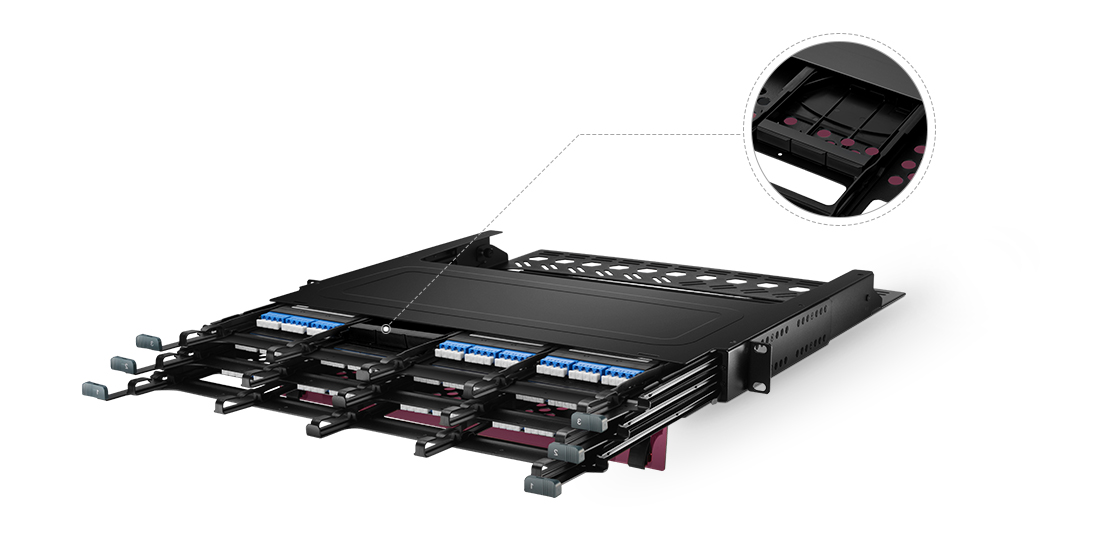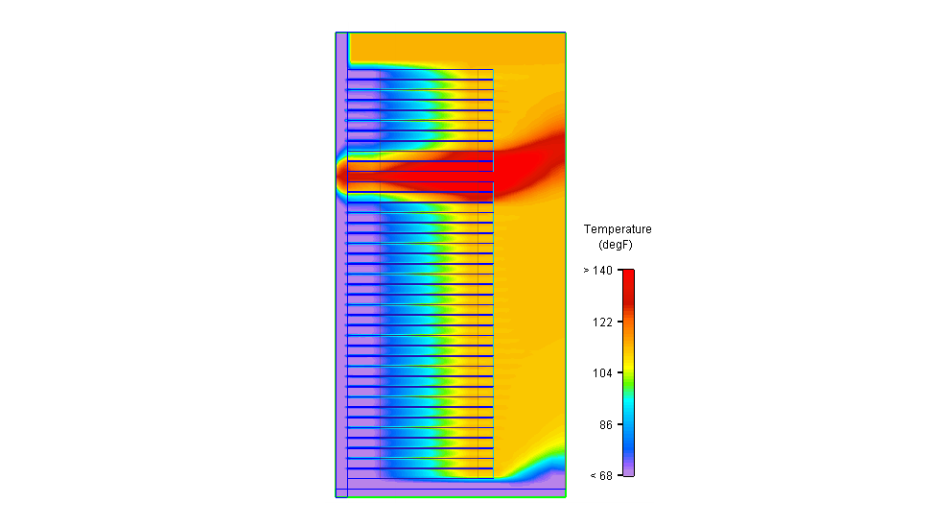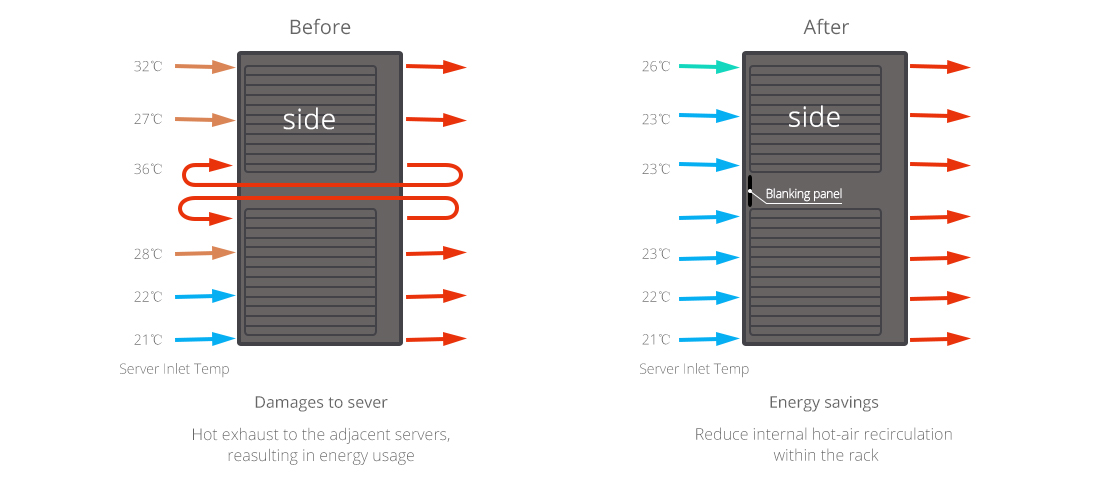Rack, enclosure and patch panel are typically cable management equipment used to secure and organize cables in data center. As the scale of data center enlarges day after day, the heating problem is paid more and more attention by people to avoid the low efficiency caused by overheating. Blanking panel, also known as filler panel, is installed in enclosure or server rack to maintain proper airflow and appropriate temperature that enjoys great popularity. In this article we will explore the working principle of blanking panel, analyse the thermal consideration within the rack and compare blanking panel material choices for your reference.
Figure1: small form factor and simple installation for blanking panel
Working Principle of Blanking Panel
When empty spaces in rack are left uncovered, it will cause inconsistent temperature along the rack face. The underlying principle of controlling airflow is that blanking panel helps to fill up those empty spaces, making for improved airflow to the installed equipment and reducing internal hot-air recirculation within the rack. Therefore, the usage of filler panel is considered to be an absolute necessity for better airflow management in data center.
Thermal Analysis: With or Without Blanking Panel
In order to show the heat distribution in a rack without blanking panel in a more intuitive way, a CFD (Computational Fluid Dynamics) model is constructed to predict temperature from a missing 1U server with no filler panel covering the void. Below figure 2 shows the result of CFD model, displayed as a side view of the rack. From this figure, we can clearly see that the hot air is free to recirculate back through the rack and into the adjacent servers. What is more, it affects the two servers above and below the gap which results in increased energy usage and lower efficiency. Figure 3 shows the temperature change before and after using the filler panel. All in all, a blanking panel can effectively control the temperature within the rack.
Figure2: the result of CFD model when using no blanking panel within a rack
Figure3: before and after using the blanking panel
Blanking Panel Material Choices
There are two types of blanking panel material choices: plastic blanking panel and metal blanking panel. From the aspect of temperature control and air flow, both of them can block up the open rack unit space and prevent hot air from recirculating to the front of the rack. Thus, it allows for better temperature control by improving the airflow of the rack. While in other aspects, plastic filler panel and metal filler panel have their different strengths and weaknesses.
- Price
Compared with metal filler panel, plastic filler panel is more affordable option for filling the empty slots in server rack.
- Easy Installation
Plastic filler panels are lightweight and toolless that provide easy and quick snap-in installation for square-hole racks. If you need to install many metal filler panels in multiple racks, carrying them around can be a hard job.
- Durability
If you have a server rack that is constantly working on, the added durability of metal blanking panel will be more worthwhile.
Conclusion
Blanking panels create a cost effective method to maintain the integrity of server rack and data center cooling implementation. They are a must-have for energy saving airflow management solution. When it comes to different blanking panel material choices: plastic blanking panel vs metal blanking panel, you can look at your unique server rack situation and choose the panel that servers your needs best by referring to the aspects of price, easy installation and durability. For user-friendly blanking panel and cable management experts of rack, enclosure and Ethernet patch panel, FS is a great choice.


